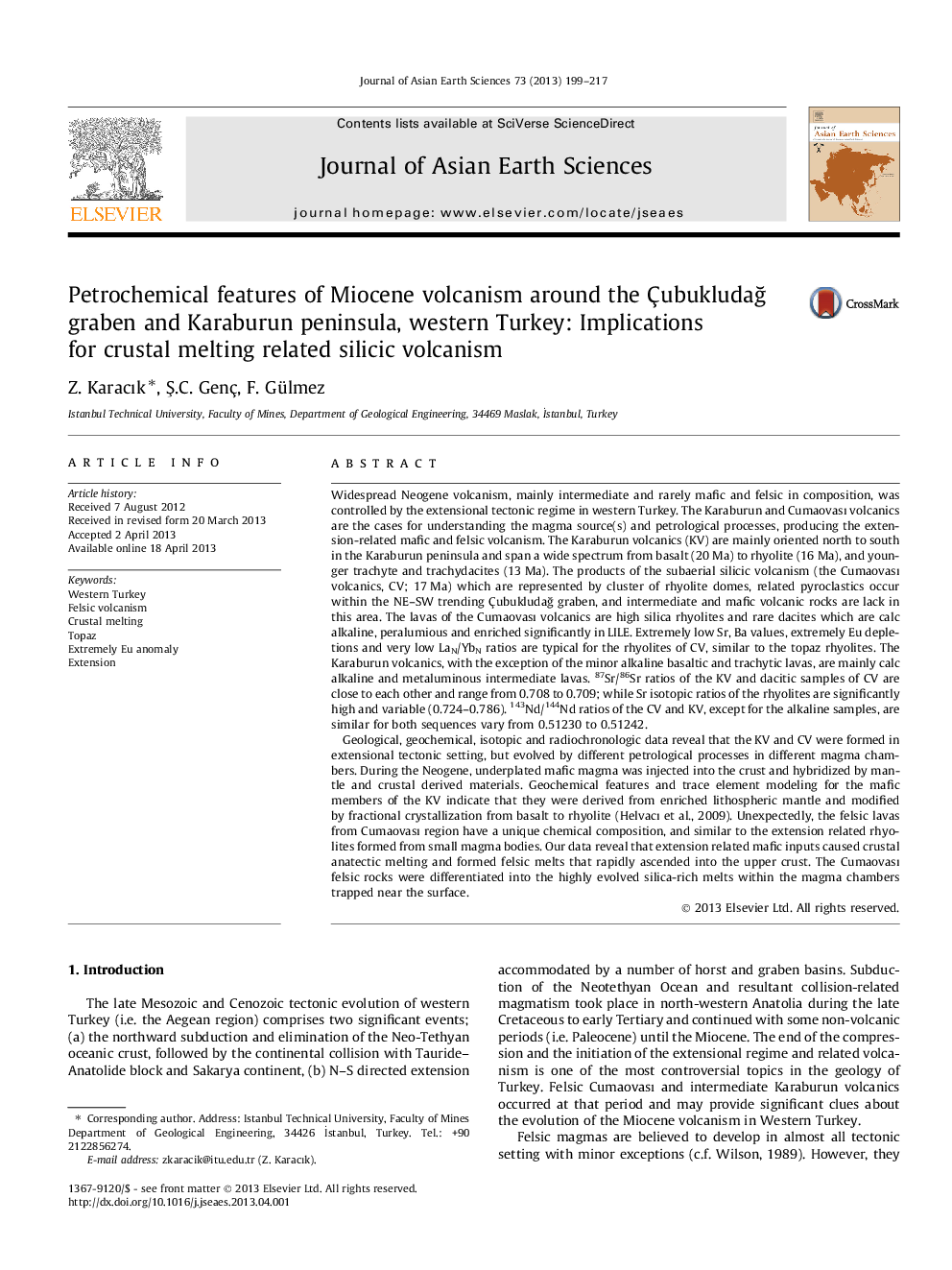| Article ID | Journal | Published Year | Pages | File Type |
|---|---|---|---|---|
| 6444490 | Journal of Asian Earth Sciences | 2013 | 19 Pages |
Abstract
Geological, geochemical, isotopic and radiochronologic data reveal that the KV and CV were formed in extensional tectonic setting, but evolved by different petrological processes in different magma chambers. During the Neogene, underplated mafic magma was injected into the crust and hybridized by mantle and crustal derived materials. Geochemical features and trace element modeling for the mafic members of the KV indicate that they were derived from enriched lithospheric mantle and modified by fractional crystallization from basalt to rhyolite (Helvacı et al., 2009). Unexpectedly, the felsic lavas from Cumaovası region have a unique chemical composition, and similar to the extension related rhyolites formed from small magma bodies. Our data reveal that extension related mafic inputs caused crustal anatectic melting and formed felsic melts that rapidly ascended into the upper crust. The Cumaovası felsic rocks were differentiated into the highly evolved silica-rich melts within the magma chambers trapped near the surface.
Related Topics
Physical Sciences and Engineering
Earth and Planetary Sciences
Geology
Authors
Z. Karacık, Å.C. Genç, F. Gülmez,
